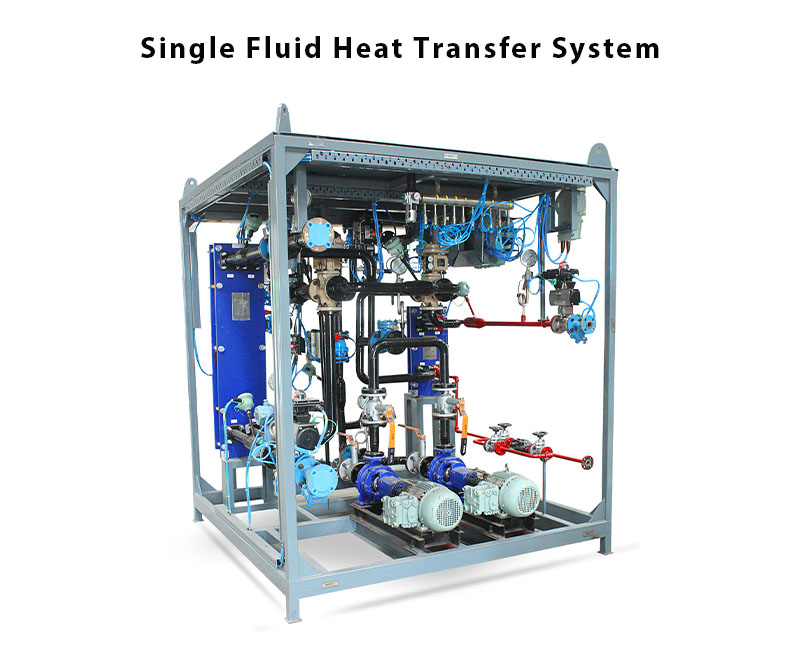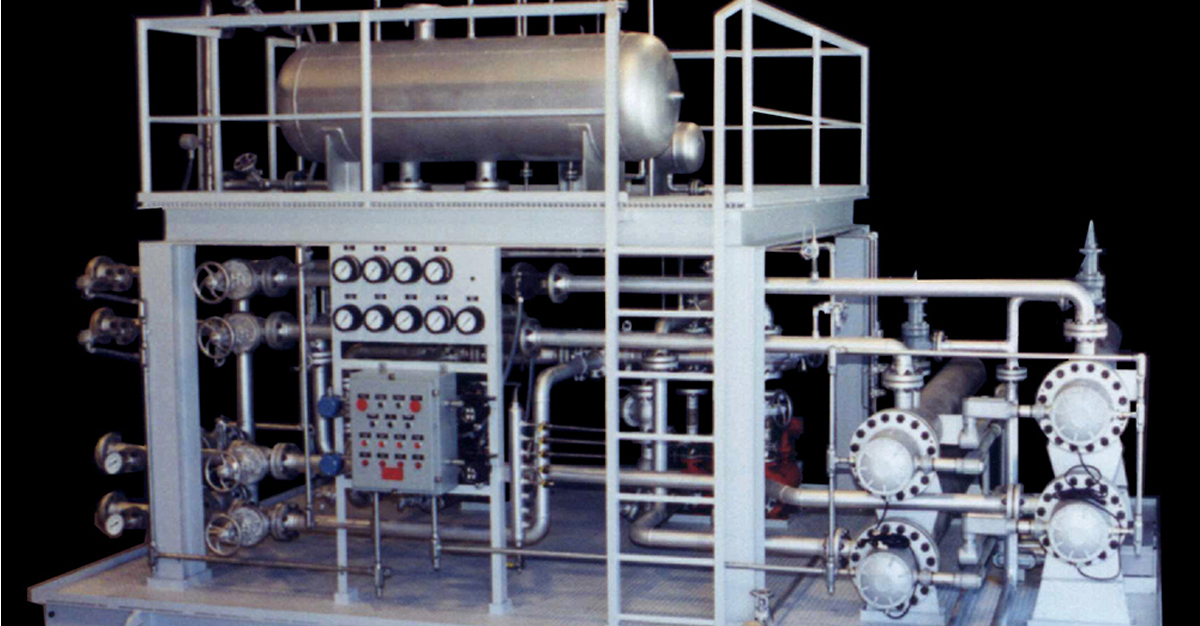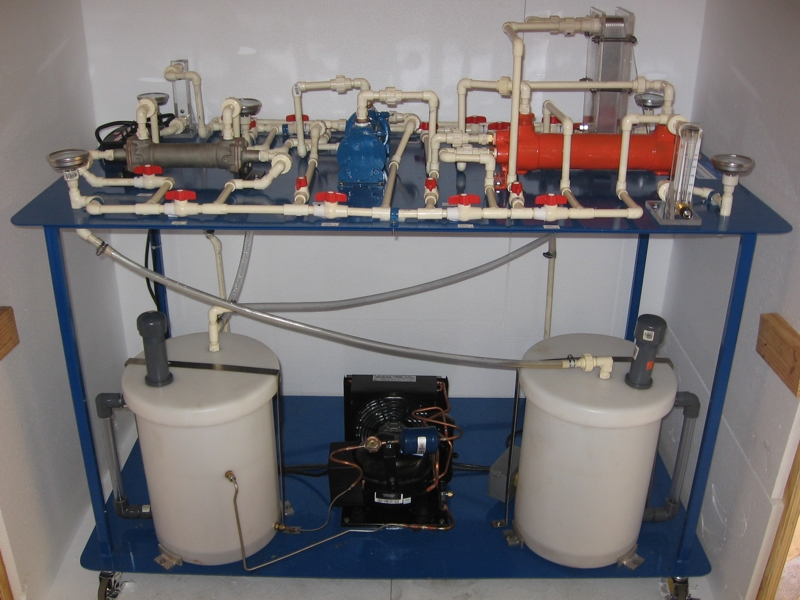Unlocking the Potential of DVS Heat Transfer Systems in Modern Thermal Management
The Duty of Heat Transfer Systems in Sustainable Power Solutions for the Future
Heat transfer systems are crucial in the quest for lasting energy solutions. They enhance thermal energy administration, improving the efficiency of eco-friendly modern technologies. By employing devices like convection, radiation, and conduction, these systems reduce power losses. Their function in solar thermal and geothermal applications is particularly considerable. As advancements arise, the possibility for additional developments elevates crucial concerns about future power techniques. What advancements will form the landscape of lasting energy?
Understanding Heat Transfer Solutions

The Value of Thermal Energy Monitoring
Efficient thermal power management is essential for making the most of power effectiveness and lessening waste in numerous systems. By regulating temperature and maximizing Heat transfer processes, companies can markedly decrease power usage and functional prices. Effective administration entails the implementation of sophisticated modern technologies and practices that keep track of and regulate thermal problems within systems, making certain that energy sources are made use of efficiently. Furthermore, appropriate thermal energy administration adds to reducing greenhouse gas emissions, lining up with international sustainability goals. It additionally enhances system integrity and efficiency, bring about boosted item quality and longer equipment life-span. Ultimately, prioritizing thermal energy management is a vital action towards creating more sustainable power options and fostering a responsible approach to power intake in property and commercial contexts.
Applications of Heat Transfer in Renewable Resource
While different renewable resource resources promise sustainability, the effective application of Heat transfer plays a crucial duty in their performance. In wind energy systems, Heat transfer is made use of for wind turbine part cooling, improving performance and durability. Geothermal power counts on reliable Heat exchange between the earth's subsurface and the liquid flowing in the system, maximizing power removal. Biomass energy processes also take advantage of Heat transfer, as it helps in converting organic materials into usable gas via pyrolysis and gasification. Additionally, in hydropower, maintaining ideal temperature levels in tanks can improve energy result. Each of these applications shows the critical relevance of Heat transfer systems in enhancing eco-friendly energy modern technologies, ultimately adding to a much more sustainable energy future.
Enhancing Solar Thermal Power Effectiveness
As solar thermal power systems remain to evolve, enhancing their efficiency has ended up being important for optimizing energy outcome. Breakthroughs in Heat transfer innovations, such as enhanced thermal storage space products and cutting-edge Heat exchangers, play a substantial role in improving performance. By making use of innovative materials that have premium thermal conductivity, systems can record and transfer Heat better. Furthermore, incorporating monitoring systems that comply with the sun's path guarantees that collection agencies receive suitable solar exposure throughout the day. Making use of nanotechnology in solar absorbers can even more increase power absorption prices. Additionally, including automated control systems assists control temperature levels and manage energy circulation effectively, causing lowered losses and enhanced total system effectiveness. These improvements lead the way for even more lasting solar thermal energy remedies in the future.
Geothermal Heating: A Lasting Solution
Geothermal heating presents a sensible choice for lasting power, offering considerable ecological benefits with reduced greenhouse gas exhausts. Its efficiency and cost-effectiveness make it an attractive alternative to standard heating unit. Nonetheless, obstacles connected to application should be addressed to optimize its prospective impact.
Ecological Advantages of Geothermal
Standard heating methods contribute substantially to greenhouse gas exhausts, geothermal home heating presents an engaging alternative that reduces ecological effect. By taking advantage of the Earth's inner Heat, geothermal systems make use of a sustainable power resource, substantially decreasing reliance on fossil fuels. This method produces marginal carbon discharges, making it a cleaner choice for commercial and residential home heating. In addition, geothermal systems advertise energy effectiveness, as they need less power compared to traditional furnace. DVS Heat Transfer Systems. The usage of geothermal energy likewise aids in minimizing air contamination, improving local air high quality and public health and wellness. As a lasting solution, geothermal home heating supports climate change reduction initiatives, placing itself as an essential part in the shift in the direction of a greener future
Effectiveness and Cost-Effectiveness
Exactly how does geothermal home heating measure up in terms of efficiency and cost-effectiveness compared to standard furnace? Geothermal heating demonstrates remarkable performance, commonly achieving a coefficient of efficiency (POLICE) of 3 to 5, suggesting it generates 3 to five systems of Heat for each system of electricity eaten. This performance equates right into reduced operating expense, specifically in areas with steady geothermal resources. First installation expenses can be greater than conventional systems; nevertheless, lasting savings on energy bills and minimized upkeep expenses can balance out these in advance financial investments. Additionally, several governments incentivize geothermal systems through discounts and tax credit scores, improving their cost-effectiveness. In general, geothermal heating emerges as a economically feasible and lasting alternative to more conventional home heating options.
Implementation Difficulties and Solutions
Numerous difficulties can impede the widespread execution of geothermal heating unit, regardless of their clear benefits as a sustainable power service. High preliminary setup prices typically deter house owners and investors, making funding a considerable barrier. In addition, the geographical limitations of suitable geothermal websites limit ease of access in certain areas. Regional guidelines and permitting processes can also make complex job development, causing hold-ups. In addition, public awareness and understanding of geothermal systems continue to be low, preventing acceptance. To deal with these go to this site obstacles, targeted education and learning projects can boost here are the findings public expertise, while federal government incentives might alleviate monetary worries. Working together with regional authorities to streamline policies might facilitate smoother job authorizations, inevitably promoting the adoption of geothermal heating as a viable, sustainable power choice.
Advancements in Heat Transfer Technologies
Technologies in Heat transfer technologies play an important function in boosting energy effectiveness and sustainability. Advanced Heat exchangers and stage change materials go to the center of these advancements, providing substantial enhancements in thermal management. These innovations not only maximize power use yet also add to decreasing ecological influence in numerous applications.
Advanced Heat Exchangers
Advanced Heat exchangers play an important function in boosting power effectiveness throughout different applications in sustainable energy services. These gadgets promote the transfer of Heat between 2 or more fluids, noticeably minimizing power intake in procedures such as industrial heating, cooling, and power generation. Innovations in products and style, such as using nanofluids and compact configurations, have actually resulted in improved thermal efficiency and reduced dimension needs. Additionally, developments in electronic monitoring and control systems enable enhanced operation, further boosting efficiency. By minimizing waste Heat and maximizing power recuperation, progressed Heat exchangers add to decrease carbon footprints and support the change toward eco-friendly innovations. Their proceeded advancement is crucial for achieving international power sustainability objectives.
Stage Adjustment Materials
The integration of stage change materials (PCMs) into Heat transfer technologies stands for a significant advancement in energy administration and performance. PCMs soak up and launch thermal energy during their phase modifications, making it possible for effective temperature level guideline in structure products and power systems. By keeping excess Heat throughout height durations and launching it when need increases, PCMs add to fill moving and power conservation - DVS Heat Transfer Systems. This capacity boosts the performance of renewable energy systems, especially in solar thermal applications. In addition, PCMs can boost the thermal convenience of indoor atmospheres, minimizing reliance on conventional home heating and cooling down methods. As developments in PCM formulations remain to emerge, their duty in sustainable energy options is poised to grow, providing appealing opportunities for future study and application

Future Potential Customers for Heat Transfer in Lasting Energy
As the need for lasting power options remains to increase, the role of Heat transfer systems is coming to be progressively crucial in shaping future innovations. Technologies in materials and styles are expected to boost efficiency in Heat transfer, reducing power losses in different applications. The integration of straight from the source advanced thermal storage systems, such as stage change products and thermochemical storage space, will certainly enable better management of energy resources. Research right into nanofluids and biomimetic Heat exchangers might better maximize thermal efficiency. The adoption of clever technologies will certainly allow for real-time surveillance and flexible control of Heat transfer processes. These improvements are positioned to greatly add to the total efficiency and sustainability of power systems, leading the way for a more energy-efficient future.
Often Asked Questions
Just How Can People Apply Heat Transfer Equipment in the house?

People can apply Heat transfer systems in the house by setting up energy-efficient devices, using radiant heat, and maximizing insulation. These measures improve power performance, decrease expenses, and promote lasting practices in residential atmospheres.

What Are the Prices Connected With Installing Heat Transfer Systems?
The expenses related to setting up Heat transfer systems vary extensively, usually including equipment, installment labor, and maintenance. Aspects such as system type, home size, and neighborhood policies significantly influence the general expenditure included.
Exist Government Rewards for Heat Transfer System Installations?
Federal government incentives for Heat transfer system setups vary by region and can include tax grants, rebates, and credit reports. These economic advantages intend to urge fostering, ultimately advertising energy efficiency and lowering ecological impact within neighborhoods.
How Do Heat Transfer Systems Influence Energy Expenses?
Heat transfer systems especially influence energy expenses by enhancing energy performance. By boosting the transfer of Heat, these systems minimize power usage, leading to reduced energy expenses and creating a much more sustainable technique to power management.
What Upkeep Is Needed for Heat Transfer Solutions?
Maintenance for Heat transfer systems consists of normal assessments, cleaning of elements, examining liquid levels, making sure correct insulation, and replacing used components. These jobs aid keep performance, avoid break downs, and extend the system's functional life expectancy.
These systems facilitate the movement of thermal power from one medium to one more, enabling the transfer of Heat for cooling, heating, or power generation functions. Geothermal energy depends on efficient Heat exchange in between the earth's subsurface and the liquid circulating in the system, taking full advantage of power removal. In addition, geothermal systems advertise energy efficiency, as they require less power contrasted to standard home heating systems. Advanced Heat exchangers play a crucial duty in improving energy performance across different applications in sustainable energy solutions. Heat transfer systems significantly influence energy bills by optimizing power performance.